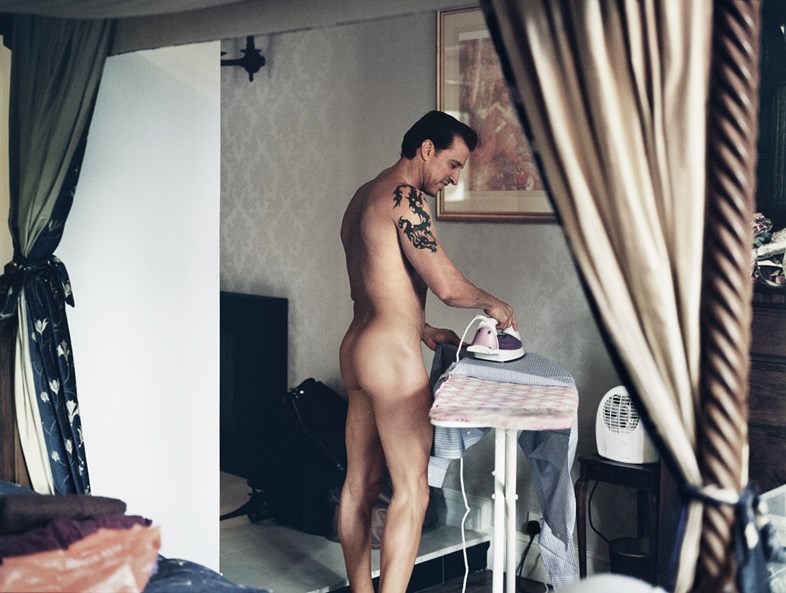The first time I watched porn, I was 15 years old. It was late and I was alone. It was not desire or lust that pushed me towards typing those four letters into Google; it was curiosity, heavy with the thrill of rebellion. My heart beat hard in my chest: with nerves, with guilt, and with excitement. I pressed play.
The video began with two people on a couch. They were almost naked, hazily draped with dim lighting and facing each other. She slid off her bra. The skin on her body was almost translucent, hugging her bones. He gripped her boob and squeezed. She gasped; it was breathy and full of heat.
Then there was thrusting and pushing and touching and grabbing, until he ejaculated onto her face. She gasped again.
It was dizzying in its foreignness. I felt strangely electrified; I was pulled towards the beauty of bodies moving together and struck by admiration for their command over their sexuality. But I felt disconnected at the same time; its seeming insincerity unnerved me, the scripted screams of pleasure and gruff expletives. Within some deep primal urge, I wanted to be able to imagine myself as one of the players on the couch. But, watching her be squeezed and slapped and subjected, I squirmed at the thought of being complicit in her objectification. I didn’t watch pornography again for a long time.

A couple weeks ago, I stumbled across Sophie Ebrard’s “It’s Just Love” photography series. Her photographs aim to reveal the humanity and complexity of the individuals who make porn. They’re beautiful and clear, simultaneously delicate and harsh, and more honest than any pornography I have ever seen. Her photography discusses the same conflicts I felt when I first watched porn. The beauty of naked bodies contrasting with the horrors of the porn industry’s physical abuses. The tension between its potential to arouse and its potential to denigrate women and their sexuality.
Scrolling through Ebrard’s photographs, I realized the problem with mainstream pornography: porn is not honest. Porn inaccurately represents sex, pleasure, relationships, and the human body. It demands shaved vaginas and bigger penises. Littered with misogyny, it eroticizes rape and forgets about women’s pleasure. Pornography is not like real sex.
And we’re all consuming this misrepresentation. Pornography is our single most influential source of sex education. From 2009 to 2010, about 13% of all web searches were for erotic content. That means that over 1 out of every 10 internet searches is for porn. And this easy access to pornography is trickling down to children: shockingly, 80% of 15- to 17-year-olds have had multiple hard-core exposures to pornography.
To me, these numbers are scary yet unsurprising. Coupled with the epidemic of abstinence-only sex education in America, people are not being taught about healthy, loving, pleasurable sex. And this calls for a revolution.
Fortunately, people are doing just that. Erika Lust, a trail-blazer in female-led porn, is focused on creating films that celebrate women’s sexuality. She recently produced a pornographic film entitled XConfessions. Based on anonymous erotic confessions submitted online, Lust directed this series of short erotic films as a radical exploration of pornography’s potential to empower and arouse. She says in an interview with Dazed: “It’s really important for young people especially who use pornography to learn about sexuality, that they’re able to watch material with different ideas, different body types, different races, different ages, and different kinds of sexualities.”
Lust’s pornography, and others like it, are examples of a new kind of pornography: feminist porn. Feminist pornography is made to counter the sexism of mainstream pornography, seeking to empower both those who make it and those who view it. Dedicated to gender equality and social justice, it is for all people, not just for women. It champions equality and diversity of sexualities, races, body types, and more. It treats its performers with esteem and pays them a reasonable wage. Above all, pornography aligned with feminist values features elements of healthy sex, like consent, focus on the pleasure of both partners, and respect.
Anti-porn feminists—like Gail Dines, Catharine MacKinnon, and Alice Schwarzer—believe that even feminist pornography is problematic. And, like everything, some of it is. But pornography is a reality of our increasingly digital world. Instead of fighting to stop this new exploration of digital erotica, we must work to shift the conversation.
Much of the feminist pornography being made today has a price, making it possible to provide ethical working conditions. Yet, the price on porn blocks those who do not have the money or do not want to pay from accessing these films. However, feminist amateur and homemade porn, a sub-movement nestled in the larger feminist pornography revolution, is working to counteract this problem. Amateur and homemade porn is pornography made by individuals performing without pay, with the intention and consent to freely distribute their product to the public. Although it does not always uphold feminist values as stringently as professional films, this movement contributes to the subversion of mainstream porn in favor of more empowering, equal, and honest erotica.
Feminist porn—and those who are working to create it—gives me hope. From sex-positive feminist and porn star Nina Hartley to the University of Toronto’s Feminist Porn Conference, efforts to create, produce, and distribute feminist pornography are quickly spreading. And with it, a healthier, more inclusive, and more realistic discussion of sex and sexuality is spreading too.
The first time I watched feminist porn, I was 19 years old. It was late and I was alone. I watched the two bodies moving together, swathed in hazy light and breathing heavily. It was beautiful in its believability. I could see myself there, with my imperfections and my stretch marks and my uncertainties. I felt intrigued. I felt comfortable within my curiosity. And I felt empowered.



